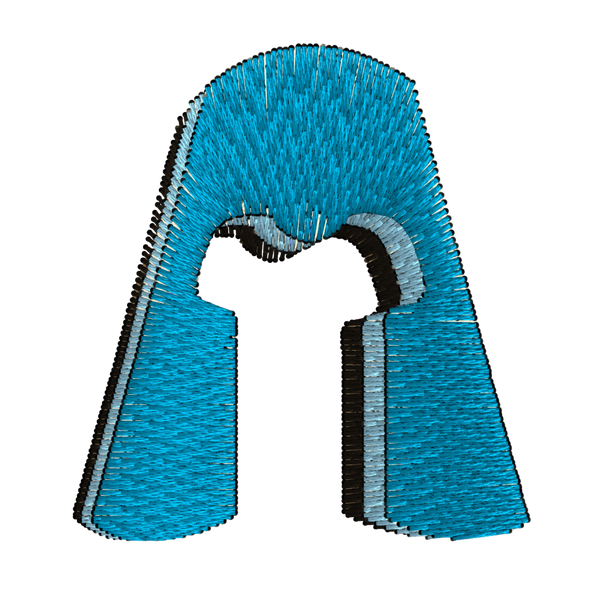
Embroidery vs. Printing: How to Choose the Best Customization Method for Your Apparel
Share
When it comes to customizing apparel, choosing between embroidery and printing can be a tough decision. Both methods offer unique benefits, and the best choice often depends on your specific needs, the type of apparel, and the design you have in mind. In here, we’ll explore the differences between embroidery and printing, their advantages and disadvantages, and how to choose the best customization method for your apparel.
Understanding Embroidery

Embroidery is a classic method of customization that involves stitching a design directly onto fabric using thread. This technique has been used for centuries and is known for its durability and professional appearance.
Advantages of Embroidery:

1. Durability: Embroidery is highly durable, and the design is less likely to fade or peel over time. The threads used in embroidery are strong and can withstand multiple washes without losing their vibrant colours.
2. Professional Look: Embroidery adds a touch of elegance and sophistication to apparel. It gives a textured, three-dimensional look that is often associated with high-quality, professional attire.
3. Versatility: Embroidery works well on a variety of fabrics, including polos, caps, jackets, and bags. It is particularly suitable for thicker materials where printing may not adhere well.
4. Customisation: Embroidery allows for a high degree of customisation in terms of thread colours and stitching patterns. This makes it ideal for creating intricate and detailed designs.
Disadvantages of Embroidery:

1. Cost: Embroidery can be more expensive than printing, especially for large designs or orders with multiple colours. The cost increases with the complexity of the design.
2. Design Limitations: While embroidery is great for simple and bold designs, it may not be suitable for highly detailed images or designs with gradients and fine lines.
3. Fabric Suitability: Embroidery may not be ideal for lightweight or stretchy fabrics, as the stitching can cause the fabric to pucker or distort.
Understanding Printing

Printing, on the other hand, involves transferring a design onto fabric using ink. There are various printing methods available, such as screen printing, direct-to-garment (DTG) printing, and heat transfer printing.
Advantages of Printing:

1. Cost-Effective: Printing is generally more cost-effective than embroidery, especially for larger designs and bulk orders. It is an affordable option for those looking to customise apparel on a budget.
2. Design Flexibility: Printing offers more flexibility in terms of design complexity. It can easily reproduce detailed images, gradients, and fine lines that may not be possible with embroidery.
3. Variety of Techniques: There are multiple printing techniques to choose from, each offering different benefits. For example, screen printing is great for bulk orders, while DTG printing is ideal for smaller quantities with detailed designs.
4. Suitable for All Fabrics: Printing works well on a wide range of fabrics, including lightweight and stretchy materials. This makes it a versatile option for various types of apparel.
Disadvantages of Printing:

1. Durability: Printed designs may fade or peel over time, especially after repeated washing. The durability of the print depends on the quality of the ink and the printing method used.
2. Limited Textures: Unlike embroidery, printing does not add texture to the design. The design remains flat on the fabric, which may not be suitable for those looking for a more tactile finish.
3. Colour Limitations: Some printing methods, like screen printing, may have limitations on the number of colours that can be used in a design. This can be a drawback for those looking to create multi-coloured designs.
Embroidery vs. Printing: Making the Right Choice
 Now that you have a better understanding of embroidery and printing, it’s time to consider how to choose the best customization method for your apparel. Here are some factors to keep in mind:
Now that you have a better understanding of embroidery and printing, it’s time to consider how to choose the best customization method for your apparel. Here are some factors to keep in mind:
1. Purpose of the Apparel:
- If you’re customizing apparel for a professional setting, such as uniforms or corporate wear, embroidery may be the better option due to its sophisticated and durable finish.
- For casual wear, promotional items, or events, printing might be more suitable, especially if you’re looking for vibrant and detailed designs.
2. Design Complexity:
- Embroidery is ideal for simple, bold designs with solid colours. It works best for logos, monograms, and text-based designs.
- Printing, on the other hand, is perfect for complex designs with intricate details, gradients, and multiple colours. If your design involves photographs or fine artwork, printing is the way to go.
3. Fabric Type:
- Consider the type of fabric you’ll be using. Embroidery works well on thicker fabrics like polos, jackets, and caps, while printing is more versatile and can be applied to almost any fabric type.
- For lightweight or stretchy materials, printing is generally a better option, as embroidery may cause the fabric to bunch up or lose its shape.
4. Budget:
- Your budget will also play a role in your decision. If you’re working with a limited budget and need to customise a large quantity of items, printing is likely the more cost-effective choice.
- However, if you’re looking for a premium finish and are willing to invest in higher quality, embroidery offers a long-lasting and professional look.
5. Quantity:
- The quantity of items you need to customize can also influence your decision. Embroidery is often more economical for smaller quantities, while printing is more cost-effective for larger orders, especially with techniques like screen printing.
6. Longevity:
- If you’re looking for a design that will last for years without fading or peeling, embroidery is the better option due to its durability.
- For designs that are intended for short-term use, such as event t-shirts or promotional items, printing is a practical choice.
Conclusion

When it comes to choosing between embroidery and printing, there is no one-size-fits-all answer. The best customization method for your apparel depends on various factors, including the purpose of the apparel, the complexity of the design, the type of fabric, your budget, and the quantity of items.
Embroidery offers a professional, durable finish that is perfect for simple designs and thicker fabrics. It’s the ideal choice for corporate wear, uniforms, and items that need to withstand regular wear and washing.
Printing, on the other hand, provides flexibility and affordability, making it suitable for detailed and colourful designs on a wide range of fabrics. It’s a great option for casual wear, promotional items, and large orders.
Ultimately, the decision between embroidery vs. printing comes down to your specific needs and preferences. By considering the factors mentioned here, you can make an informed choice that best suits your customisation needs.
Whether you choose embroidery or printing, both methods offer unique benefits that can help you create eye-catching and personalised apparel that stands out.






